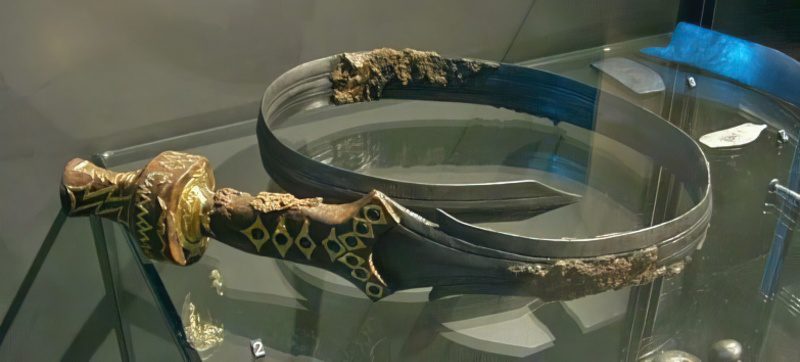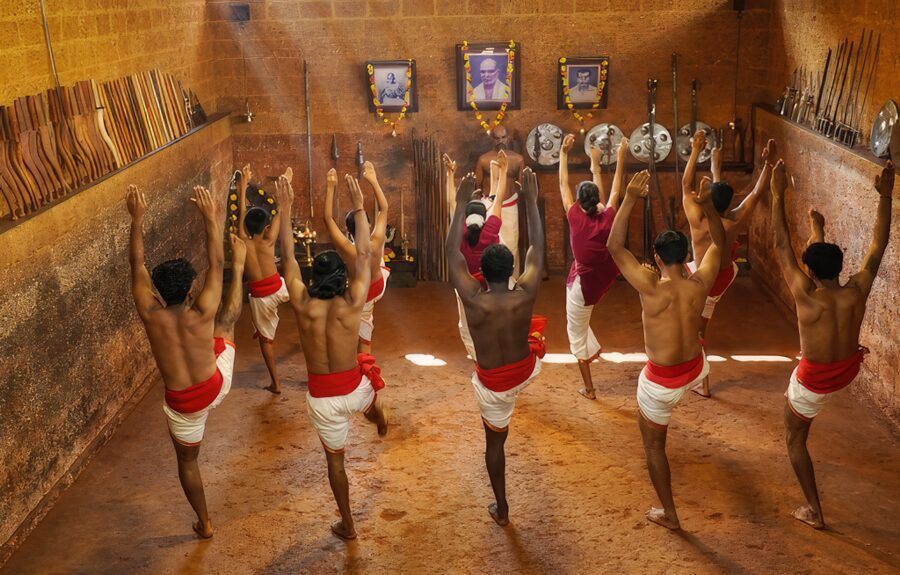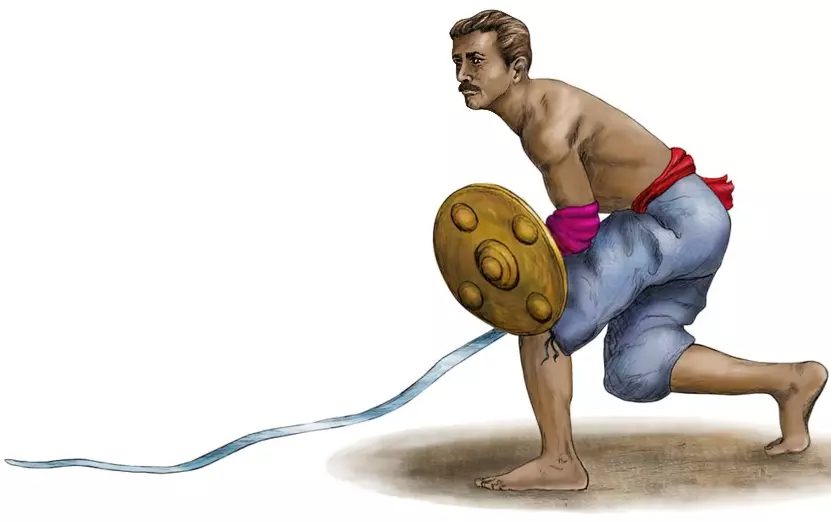The Story of Urumi (Whip Sword) – The Most Bizzare Weapon
NO AI USED This Article has been written and edited by our team with no help of the AI

The Urumi sword is commonly known as the Whip Sword due to its unique appearance. It hails from India, though its origins are shrouded in mystery, and is considered one of the most bizarre-looking weapons in history.
This weapon is truly one-of-a-kind, with few similar designs outside its area of origin. It has a handle and guard, like other swords, but it can reach up to 60 inches (153 cm) in length. Some Urumi feature more than 10 blades, each long and flail-like, yet made of steel.
Although it is often associated with ancient Indian lore, it is rarely mentioned in ancient texts, depicted in art, or described in battlefield accounts.
In this article, we shed light on the story of the Urumi sword. We start with its origins before explaining how it came to feature in one of the world’s first martial arts, its use in combat, and its modern-day status.
Origins & Background

The Urumi sword originated in Kerala and Tamil Nadu, provinces on the southwestern coast of India. It is known as “Aara” or “Chuttuval,” which translate as spinning, coiling, or in some cases, rolling sword.
The circumstances of its origin are highly disputed. Some trace its beginnings to the Mauryan Dynasty, known as the Sangam Period. However, historical sources from that time are sparse. It first appears in the Vadakkan Pattu, or Northern Ballads, which date from around the 12th century.
These ballads narrate tales of India’s earliest martial arts and feature heroes and heroines such as Aromal Chekavar and Unniarcha, champions skilled enough to single-handedly take down several vagabonds with their whip swords.
As described by later Portuguese explorers, these arts were deeply rooted in Indian culture and could date back to ancient times. This is supported by local folk stories, according to which whip swords were created by deities such as Agastya and Parashurama.
The Urumi in Indian Martial Arts

The real significance of the Urumi sword relates to its role in martial arts, specifically Kalaripayattu. This martial art is one of the earliest in human history and remains active today. It is practiced inside a kalari.
Kalaripayattu consists of several stages, each associated with a different weapon, depending on the rank and skill of the trainee. Because it can easily injure the inexperienced user, the Urumi features in one of the advanced stages.
Wielding the Urumi requires a high level of agility and involves frequent jumping, rolling, and turning. It is typically used alongside a shield for protection and can even be tied around the user’s waist.
“Even the slightest recoil can lead to gruesome self-injury”, says Arjun Bhagat, a researcher and documentary maker, who made a film about the Urumi sword.
Mastering the Urumi requires skill and practice. It was commonly used in traditional Indian duels, which favored slashing over thrusting. Its flexibility and the relatively low-grade damage it inflicts make it perfect for non-lethal dueling.
Urumi Whip Swords in Battle & Everyday Life

The Urumi sword is a less-than-ideal combat weapon due to its flail-like design and its limited effectiveness against armor and shields. In fact, there is little to no historical documentation of its use on the battlefield.
It was used frequently, however, in everyday life. Its design allowed for easy carriage. In some cases, it would be wrapped around the user’s waist or arms like an armband. It was effective against unarmored opponents, for instance, bandits and vagabonds, and was for this reason commonly carried by both men and women.
The Urumi was more practical in southern India, due to the lack of heavy armor there, unlike in the North.
Modern-Day Representation & Use

The Urumi can still be found in regions such as Kerala, Rajasthan, and Punjab. It is deeply rooted in the practice of martial arts in India. It still features in disciplines such as Kalaripayattu, Kuttu Varisai, and Sikh martial arts like Gatka. It is still occasionally carried for self-defense in rural regions.
Recently, the Urumi has started to gain recognition outside of India, for example, in the video game Elden Ring. The depiction is largely historically accurate. For instance, the weapon is shown in slashing and long-range whirlwind attacks. However, the game inaccurately shows the weapon penetrating the armor.




